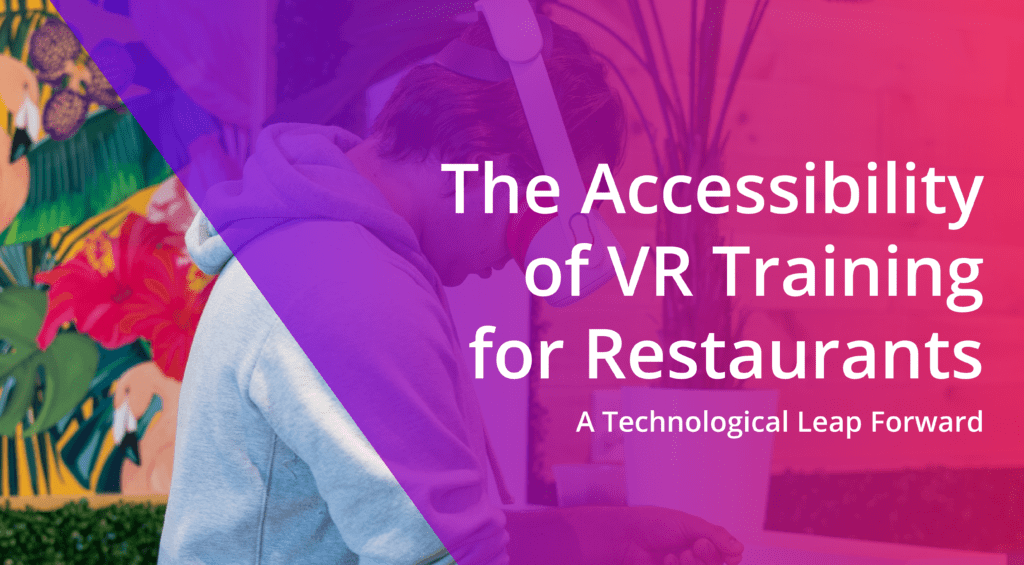In the fast-paced world of the restaurant industry, training employees efficiently and effectively is crucial. Traditional methods, while valuable, may not always provide the level of immersion and interactivity needed to prepare staff for real-world scenarios. This is where Virtual Reality (VR) training steps in, revolutionizing restaurant education by offering a dynamic and engaging learning experience. But just how accessible is VR training for restaurants today?
1. Cost-Efficiency and Affordability
VR technology has become more accessible in recent years, with a wider range of headsets available at various price points. While high-end VR systems can be costly, more affordable options like the Oculus Quest series and the Pico Neo 3 Pro offer an excellent balance between performance and price. Additionally, some VR training platforms offer subscription-based models, making it more budget-friendly for restaurants with limited resources.
2. User-Friendly Set-Up
Setting up VR systems has become increasingly user-friendly. Working with a full-service VR training company like Smooth Soft eliminates the need for a dedicated computer or complex installation process as we ensure the VR headset you receive is ready to be used (“plug and play”). This simplicity means that even restaurants without extensive technical expertise can implement VR training seamlessly.
3. Customizable Training Modules
VR training platforms are designed with flexibility in mind. Restaurants can tailor training modules to meet their specific needs, whether it’s for front-of-house staff, chefs, or management. This customization ensures that employees receive relevant and targeted training, enhancing their performance and efficiency on the job.
4. Immersive Learning Experience
One of the key advantages of VR training is its immersive nature. Employees can practice tasks and scenarios in a virtual environment that closely resembles their actual workplace. This hands-on experience helps build muscle memory and confidence, leading to better performance on the job.
5. Safety and Compliance Training
In the restaurant industry, safety and compliance training are paramount. VR allows for realistic simulations of emergency situations, such as kitchen fires or medical incidents. This hands-on approach helps employees learn how to respond effectively, ensuring a safe working environment.
6. Remote Training and Onboarding
VR training can also facilitate remote onboarding and training sessions. This is especially valuable for large restaurant chains with multiple locations, as it allows for consistent training across different sites. Employees can access VR training modules from anywhere, reducing the need for physical travel.
7. Accessibility Features for All
As inclusivity becomes a priority in all industries, VR training platforms are starting to incorporate accessibility features. This ensures that individuals with disabilities can also benefit from this innovative training method. Features like voice commands, haptic feedback, and customizable interfaces make VR training more inclusive and accommodating for all employees.
Conclusion: Embracing the Future of Restaurant Training
While VR training for restaurants was once considered a futuristic concept, it has quickly become a practical and accessible solution for the industry. With its cost-effective options, user-friendly setup, and customizable modules, VR training provides a powerful tool for enhancing employee performance and ensuring a safe and efficient working environment. As technology continues to advance, VR training is poised to play an even more significant role in the future of restaurant education. Embracing this innovation today can lead to a more skilled, confident, and prepared workforce tomorrow.

